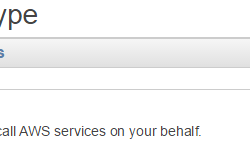Improve your security and enforce AWS Access Key rotation for IAM Users
Best practices state to not use AWS Access Keys as they provide long term access and instead you should utilize IAM roles. but unfortunately there are times that require utilizing Access Keys and granting users with pragmmatic access. The problem is that AWS doesn’t offer a solution to enforce rotating Access Keys, and such can Read more about Improve your security and enforce AWS Access Key rotation for IAM Users[…]








